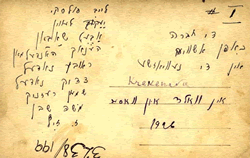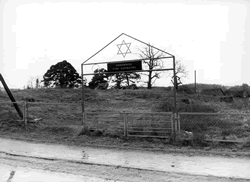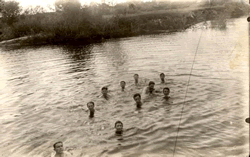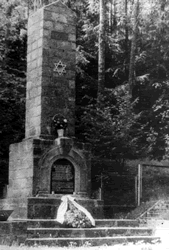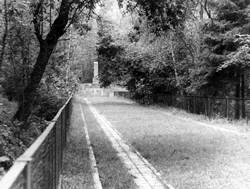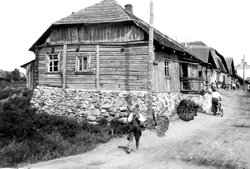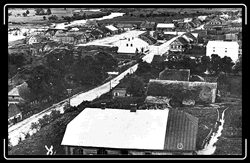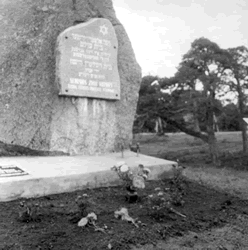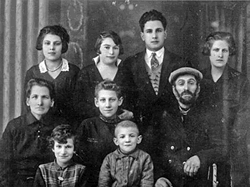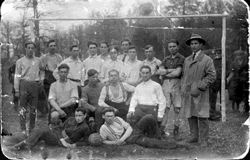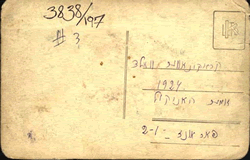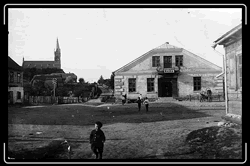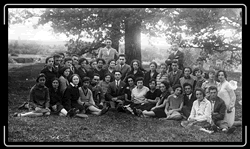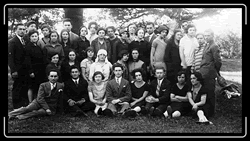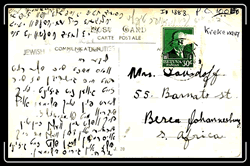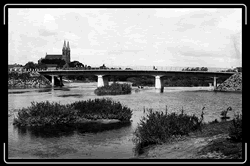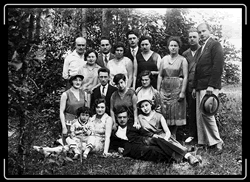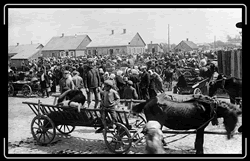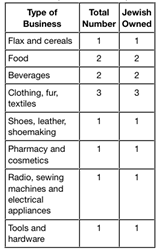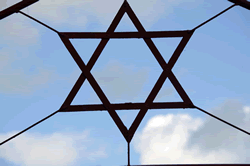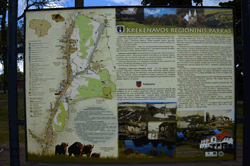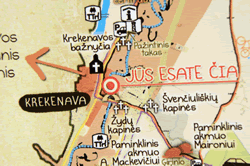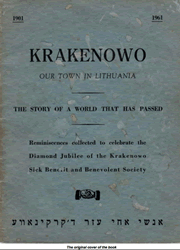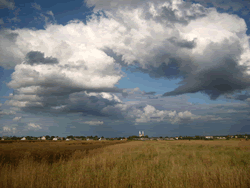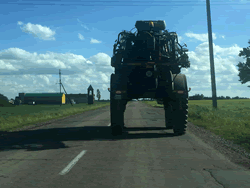|
#krek-1: |
#krek-2: Krekenava, Lithuania, Entrance to a cemetery, Postwar. |
#krek-3: Krekenava, Lithuania, Youths bathing, 1926. |
|
#krek-4: Krekenava, Lithuania, A monument at the site of the murder of 8,000 Jews: men, women and children, Postwar. |
#krek-5: Krekenava, Lithuania, The site of a mass murder in the forest, Postwar. |
#krek-6: Krekenava, Lithuania, Prewar, A street scene. |
|
#krek-7: |
#krek-8: Krekenava, Lithuania, A monument in the old cemetery, Postwar. |
#krek-9: Second from the left is Nina nee Chaimovitz who was born in Krekenava. |
#krek-10 Krekenava, Lithuania, A group of youths in a summer camp, in the Krekenava forest. |
#krek-11: |
#krek-12: |
|
#krek-13: |
#krek-14: |
#krek-15: |
#krek-16: |
#krek-17: |
#krek-18: |
#krek-19: |
#krek-20: |
#krek-21: |
#krek-22: |
#krek-23: |
#krek-24: |
#krek-25: |
#krek-26: |
#krek-27: |
| #krek-28: |
#krek-29: |
#krek-30: |
#krek-31: |
#krek-32: |
#krek-33: |
#krek-34: |
#krek-35: |
#krek-36: |
#krek-37: |
#krek-38: |
#krek-39: |
|
|
|
Created by Eilat Gordin Levitan
Krakenava
In Hebrew & Yiddish known as Krekenava; in Russian as Krakinovo;
a town in the District of Panevezys.
Written by Josef Rosin
Translated by Shalom Bronstein
Krekenava is located in northern Lithuania on the right bank of the Nevezis River, 30 kilometers southwest of the district city of Panevezys. It developed adjacent to a large estate of the same name in the 16th century. In 1580, it was given the right to hold three fairs a year. In the 17th century, it already had a number of merchants and artisans and was well known as a center for the production of bricks for ovens. Between the years 1795-1915, it was under Russian rule, initially as part of the District of Vilna and later in the District of Kovno. During the period of Lithuanian independence in the 17th century, it was the center of a sub-district.
The Jewish Community through World War I
It appears that Jews began to settle in Krekenava at the end of the 17th century. In 1766, there were 344 registered poll-tax payers in the community.
The Jews of Krekenava earned their living through petty trade, peddling and in agriculture, by leasing fields. Other Jews supplied fuel for the limekilns that were in the area. Members of some families immigrated to South Africa and sent funds from there to support their families until they could join them in their new homes. In those years, there was also an active landsmanschaft organization of former Krekenava residents in South Africa.
In 1881 a fire destroyed more than half of the buildings, including the Beit Midrash [study hall] which was then under construction. Some 190 families were left destitute. In that year, an appeal was published in Hamelitz[the first Hebrew newspaper, founded in 1860, to appear in Russia] signed by the local rabbi, R. Nathan Neta Flaum, addressed to Horace von Guinzberg of St. Petersburg for funds to aid these families. As a result, the Baron and many other communities in Lithuania came to their aid. A large sum was also raised by Rabbi Dr. Y. Rilf of Memel (cf.). Between 1882-1883, the Beit Midrash was rebuilt. It also contained a 'shtibel' where the poor and simple people prayed. There was also a smaller Beit Midrash and a yeshiva. In 1897, two more fires broke out and most of the town's houses, some 270, were destroyed. Also burned were the large Beit Midrash, two small synagogues and the two-story Talmud Torah.
The rabbis of the community during this period were R. Moses Mishel Luria, who served for 50 years from 1800; his son R. Nathan Neta Flaum Luria, who served from 1860 until his death in 1885; R. Moses Cheskin, 1900-1915, who also established and headed the town's yeshiva. In the list of contributors to the Agudat Israel Fund the names of 7 Jews from Krekenava appear. Many residents' names are found in two 1903 lists of contributors to aid further Jewish settlement in the Land of Israel. The delegate was David Grashater.
In May 1915, during World War I, the Russian government expelled Krekenava's Jews and the entire city was burned to the ground.
Independent Lithuania
With the war's end and the establishment of the independent Lithuanian state, only one third of the pre-war Jewish residents returned. A nine member Jewish Community Committee, whose representatives consisted of 4 Mizrachi, 4 Artisan, and one independent delegate, was elected in 1919 when autonomy was granted the Jews. This Committee, which concerned itself with most aspects of Jewish life, functioned until 1925.
During this period, most Jews earned their living through trade, but some were artisans. According to a 1931 survey conducted by the Lithuanian government, Krekenava had 12 stores, all owned by Jews.
In close proximity to the city were two flourmills and a factory that produced roof tar that were Jewish owned. In 1937 there were 37 Jewish skilled workers as follows: butchers - 10; tailors - 7; shoemakers - 4; bakers - 3; blacksmiths - 2; stitchers - 2; weavers - 2; painters - 2; and one glazier, milliner, barber, tinsmith and potter.
The People's Bank (Folksbank) played a central role in the Jews' economic life. In 1920, it had 62 members, which grew to 215 in 1927. In 1939, 7 of the town's 28 telephone subscribers were Jews.
Relations between the Jews and their Lithuanian neighbors were generally good, but here and there, some assaults did occur. In 1929 on the road near Krekenava, toughs attacked three Jewish merchants. A blood libel was spread against the Jews in the spring of 1936 and only because of the government's intervention and the subsequent punishment of the inciters, were there no Jewish causalities.
Jewish children received their elementary education in the Hebrew language school that was part of the Tarbut system which began to function in 1920. In 1922, an appropriate school building was constructed with the help of funds sent from America. The school averaged 170 pupils. Krekenava also had a library of 2,000 Hebrew and Yiddish books.
Many of Krekenava's Jews were affiliated with the Zionist movement. All Zionist factions were represented and nearly every house had a blue and white Jewish National Fund charity box. The division of voting in Krekenava for the Zionist Congresses in Krekenava is as follows:
Among the active Zionist youth groups were Hehalutz, Hehalutz Hatzair, Hashomer Hatzair and others. Zionist athletic activity took place under sponsorship of the local Maccabi chapter.
There was a synagogue, Beit Midrash (study hall), and a 'kloiz' (small synagogue), as well as a yeshiva that had 30 students, and branches of 'Agudath Israel Youth' and 'Tiferet Bahurim' (Pride of Young Men) [both non-Zionist Orthodox organizations]. There were also study groups, which gathered to learn in depth specific religious texts such as Torah, Ein Ya'akov, Menorat Hamaor, Mishnah, Psalms, etc. Among the community organizations providing relief for the needy were 'Linat Hatzedek' (housing), 'Gemilat Hesed' (free loans), 'Hakhnasat Kalah' (providing weddings for poor brides), and a Hevra Kadisha (burial society). Rabbi Benjamin Moushah, who perished in the Holocaust, was the last rabbi of Krekenava. Many of the townspeople were very knowledgeable Jews. A number of them had rabbinic ordination but they did not earn their living by exploiting their religious knowledge.
Among the town's well known natives were Rabbi Saul son of R. Moses Mishel Luria; Rabbi Eliezer Judah Rabinowitz, who served as rabbi in Memel for 19 years, was a member of the Mizrahi Central Committee and who perished in the Holocaust; Rabbi Joseph Elijah Fried, who served as rabbi in Shukian (Saukenai, cf.) and later emigrated to the United States; Abba Shaban (1908-1978) a journalist and editor of Yiddish newspapers in Johannesburg; Eliezer Molk, b. 1913 who during the 1970s was the secretary of Haifa's labor council.
World War II and its Aftermath
Lithuania was annexed to the Soviet Union as a Republic in 1940. In Krekenava, as in other locations, factories, the flourmills and some of the stores were nationalized; the Jews had previously owned most of them. All Zionist parties and youth groups were disbanded and Yiddish replaced Hebrew as the language of instruction in the Jewish school.
With the outbreak of war between Germany and the Soviet Union on 22 June 1941, many of Krekenava's Jews sought refuge in the Soviet Union. They left in a long convoy of wagons in the direction of Panevezys (cf.). There, Lithuanian nationalists, who had already organized, stopped them and forced them to return to Krekenava. The Germans had occupied the town, but let the Lithuanians govern it. All the young Jewish men were arrested and jailed near the police station. After a few days of torture, they were divided into two groups. One was led to the 'Priest's Fields' on the rise outside of town and the other to the field between the stone bridge and the Nevezis River. They were forced to dig pits, were shot and buried in the pits they had dug. The murderers then took the attractive Jewish young women, dragged them to a cellar, where they were raped and tortured to death.
Shortly thereafter, a portion of the remaining Jews was driven from their homes to the Beit Midrash where they were held without food or water. A Lithuanian guard, who refused to permit a Jew to leave, was stabbed by that Jew. After a few days, the majority of the men were taken to the road leading to Panevezys where they were forced to break rocks into gravel for paving the road. There they worked for a short time before being murdered and buried on the spot. The women, children, and remaining men were transferred to the synagogue and some nearby houses and the area was declared a 'ghetto.' They were held there without food or water to 27 July 1941, when they were ordered to pack their few remaining possessions in preparation for transfer to a 'camp.' They were transported to a nearby airfield at Pajuoste. They were thrown from the wagons, which continued on the road with their possessions. After a few days of torment, again without food or water, all were murdered and thrown into pits, which had been previously dug on the murderers instructions.
One Jew, Shalom Grak, who managed to survive the war hidden by some area Lithuanian farmers, joined the Soviet police after the war and took revenge, as much as possible, on the wartime Lithuanian police. He was captured by opponents of the regime and tortured to death. After the war, a mass grave of 200 men, women and, children was uncovered on the banks of the Zenepersa River, one kilometer from Krekenava, some 400 meters from the road to Survilishok (Surviliskis).
In 1991, the cemetery of the former Jewish community was restored. On the new metal gate is the inscription in Lithuanian, "The Jewish Cemetery of Krekenava." Inside, a monument was erected with the following inscription in Yiddish, Hebrew, and Lithuanian, "The Old Cemetery -- May the Deceased be Remembered Forever."
The article on Krekenava was written by Josef Rosin; an extensive bibliography follows.
Bibliography
Central Zionist Archives: Files 55/1788, 55/1701, 131/15/13, Z-4/2548.
Davar [Hebrew] (Tel Aviv): 27.1.1943
Di Yiddishe Shtime [Yiddish] (Kovno): 26.13.1920, 29.1.1929, 27.1.1928, 23.8.1929, 3.9.1931, 3.3.1936, 23.3.1936, 8.3.1938.
Gottlieb, Ohalei Shem [The Tents of Shem], p. 188. [Hebrew]
Hamelitz [Hebrew] (St. Petersburg): 7.6.1881, 21.6.1881, 7.2.1882, 7.11.1882, 14.5.1883, 15.6.1883, 23.2.1885, 19.1.1885, 7.4.1900.
Kamzon, Lithuanian Jewry [Yahadut Lita], pp. 95, 102. [Hebrew]
Krakenowo, Our Town in Lithuania [English & Yiddish], 1901-1961, Krakenowo Sick Benefit and Benevolent Society in South Africa
Naujienos [Lithuanian] (Chicago): 11.6.1949
Unzer Leben [Yiddish] (Kovno): 17.6.1938
Volksblatt [Yiddish] (Kovno): 13.11.1940
Yad Vashem Archives: M-9/15(6), 0=3/3034.
YIVO: Lithuanian Communities Collection, Files 1022-1038.
Krekenav
by elirab
Krevenava Cemetery
The town and synagogue
Laima and I meet history teacher Ruta Adamkeviciene, who kindly shows us the few Jewish sites remaining
New book by David Sandler
KRAKENOWO ~ A TOWN IN LITHUANIA ~ the story of a world that has passed
The reprint of the booklet printed by the South African Krakenowo Sick Benefit and Benevolent Society in 1961 to celebrate its diamond Jubilee. All articles in Yiddish have now been translated into English.
Contact: David Sandler
sedsand@iinet.net.au
The first two articles - click Krakenowo link below to read.
Krekenava - Wikipedia
http://elirab.me/wp-content/uploads/2017/06/Krakenowo.pdf
Krekenava is a town (population 2,003) in Panev?žys district municipality in northern Lithuania, on the bank of Nev?žis.
Source: en.wikipedia.org/wiki/ Krekenava
Can we squeeze under?
On way back to Kedainiai, we visit the other Holocaust site on the outskirts of Kedainiai.
